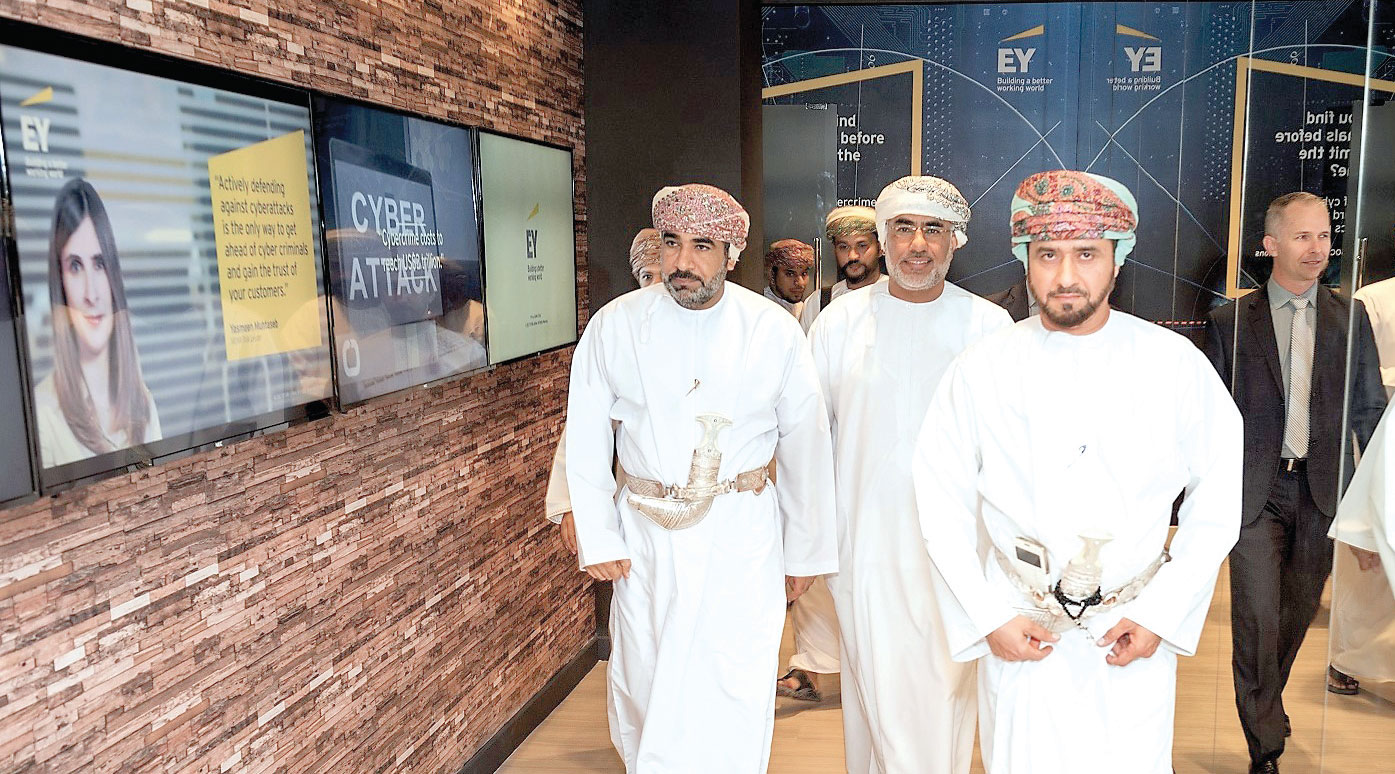

MUSCAT, DEC 9 - “Firms and organisations across various industries openly acknowledge cyber attacks as one of the most prominent digital risks they face and are becoming increasingly vulnerable due to their increased digital footprint beyond traditional boundaries,” remarked Clinton Firth, MENA Cybersecurity Leader, EY, during the opening of a state-of-the-art, multi-million cybersecurity centre in Muscat on Thursday.
Dr Ahmed bin Mohammed al Futaisi, Minister of Transport and Communications, inaugurated EY’s MENA Digital Security Operations Centre (DSOC).
Using EY’s latest award-winning cyber analytics platform, the 24-hour facility offers cybersecurity-monitoring services focused around threat detection and threat hunting of the entire digital ecosystem — covering information technology (IT), operational technology (OT) and the Internet of things (IoT).
The launch of the centre is in response to the increased demand for cybersecurity services, and to solve the most complex cyber problems using machine-learning technology.
According to EY Global Information Security Survey last year, 57 per cent of respondents have had recent significant cybersecurity incident. To counter this trend, organisations need to be innovative. The approach to cyber protection must evolve from trying to prevent all threats into that of building strong sense and resist capabilities.
Ahmed Amor al Esry, Oman Managing Partner, EY, says “The security centre in Muscat is the first of its kind in the region, serving clients across the Middle East and North Africa (MENA). Oman plays a key strategic role in the Middle East as the GCC Computer Emergency Response Team (CERT), which also encompasses wider CERT responsibilities for Middle East and Africa.
Similar to other GCC countries, Oman is significantly investing in cyber talent through education and training, which allows EY to hire the right foundational level security professionals into its digital security functions. The centre is an excellent way for EY to contribute to GCC national talent development by utilising the skills of Omani cyber professionals in the country.”
The EY MENA DSOC leverages its exclusive strategic alliance with Los Alamos National Laboratory (LANL), a leader in solving security challenges using technology and cyber analytics, to deliver some of the most advanced behavioural cybersecurity tools available such as the award-winning anomaly detection technology, PathScan. EY and LANL were recently awarded a prestigious global scientific R&D 100 award for the development of this world-leading solution.
Clients can now access one of the world’s most advanced cyber technology solutions, delivered as a service through EY’s DSOC on a subscription-based model. The centre will have a dedicated focus on the MENA region in respect to its unique challenges and threats.
Clinton Firth, MENA Cybersecurity Leader, EY, says, “As many organisations have learned, cyberattacks are no longer a matter of ‘if’, but ‘when’. Hackers are increasingly relentless. When one tactic fails, they will try another until they breach an organisation’s defences. At the same time, rapid technology adoption is increasing an organisation’s vulnerability to attack through increased online presence, broader use of social media, mass adoption of mobile devices, increased usage of cloud services, and the collection and analysis of big data.”
“EY Cyber Analysts will be able detect and track advanced attackers inside a client’s network and actively monitor an attack throughout its lifespan, providing valuable insights for focused countermeasures and remediation,” continued Clinton.
Specialised MENA DSOC analysts will be able to address four key cyber challenges affecting companies in the region: holistic digital ecosystem coverage, continuous 24/7 security monitoring, incident response, and threat intelligence.
“Traditional security systems are struggling to keep pace as organisations continue to invest in technology that makes their systems more intelligent, automated, and digitally connected. Consequently, there is an increasing need for organisations to embrace a more sophisticated approach to cybersecurity if they are to remain protected,” said Clinton.
“There is no industry that is immune, and as clients move their operations to digital to provide the benefits that it brings, it also increases the exposure of cyber risk. All enterprise clients need to move to a form of 24/7 monitoring to protect their digital presence from attack regardless of industry,” he added.
Jomar Mendoza
Oman Observer is now on the WhatsApp channel. Click here



